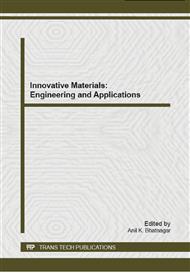p.464
p.471
p.477
p.482
p.489
p.495
p.503
p.509
p.514
Analysis of Micro-Texture and Grain Size Distributions in Machined Aluminum Alloy 7075
Abstract:
the effects of turning on the gradients of micro-texture and grain size of Al alloy 7075 processed by turning is studied. Analytical models based on Boussinesq equation and stress/force transformation, predict that the equivalent von-Mises stress penetrate almost 1 mm below the machined surface with a maximum of 1400 MPa. The induced temperature below the surface is and reaches up to 240°C. As a result of deformation below the machined surface, the grains below the surface show a preferred grain shape orientation different from the grains in the central region. The normalized population of (121) plane increases at the machined surface compared to the central part of the sample. Orientation distribution functions reveal that at the central part of the sample, the material is mostly randomly oriented and the closest texture component is the recrystallized texture. On the other hand, the strongest texture attribute at the machined surface is β-fiber torsion. The average grain size shows a 10% decreases moving away from center while below the machined surface there is a 50% increase in the average grain size. This can be due to the grain growth caused by higher temperatures right below the machining tool. The reported results provide a toolset to determine the final properties of the material after machining in addition to providing means to more accurately describing the machining mechanics.
Info:
Periodical:
Pages:
489-494
Citation:
Online since:
October 2014
Authors:
Keywords:
Price:
Сopyright:
© 2014 Trans Tech Publications Ltd. All Rights Reserved
Share:
Citation:


